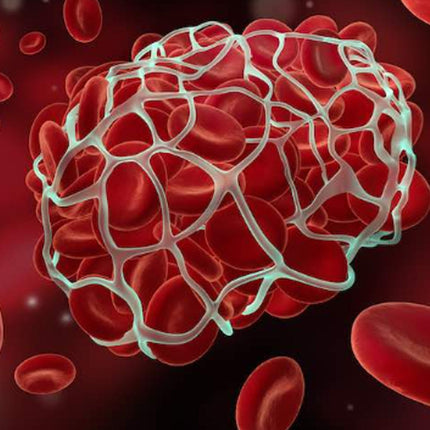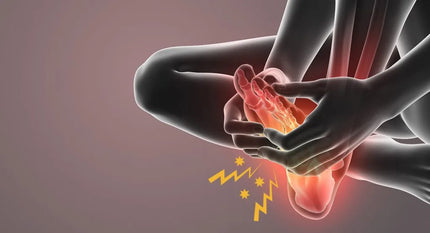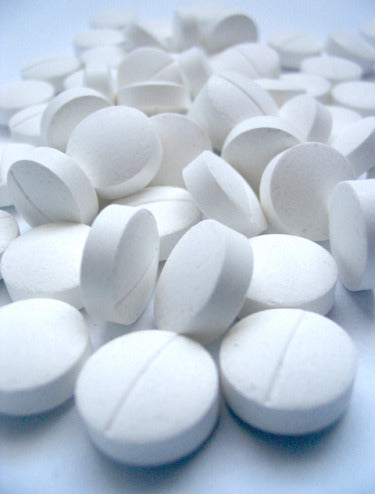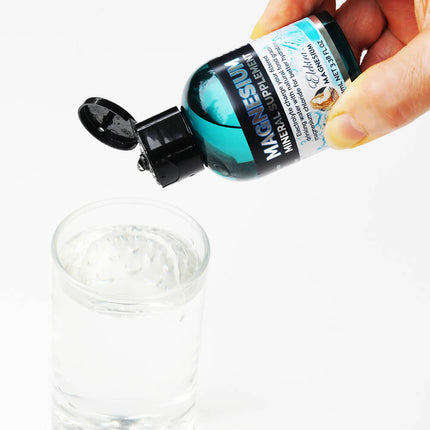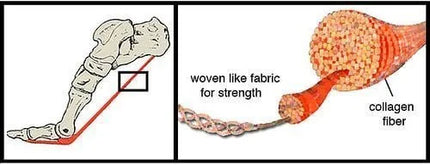Tax included and shipping calculated at checkout
Magnesium supplements are now the biggest selling nutritional supplement by pharmacies in modern urban societies. Awareness of the immense importance of magnesium to life and health is gaining traction as people who are suffering from stress-related magnesium deficiency symptoms look for solutions.
Coinciding with this popular movement to quell cramps and restless legs, or to get a better sleep and recover from stress, advertisements increasingly proliferate in the media touting the benefits of many ‘different types of magnesium’ tablet. But do they live up to their promotions and expectations?
Types of Magnesium Tablets: What’s the Difference?
Supplement manufacturers describe certain magnesium compounds as ‘organic’ if the magnesium ion is joined up with a fruit derived acid like citric acid, malic acid, or ascorbic acid, or if it’s joined up with an amino acid like glycine (as in magnesium glycinate (Bisglycinate), or taurine (as in magnesium taurate). These so-called ‘organic’ compounds are lab-made and are not found as such in nature.
In this context, the word organic doesn’t mean grown without artificial chemicals or hormones, but instead means the substance from a food source containing carbons. If referring to magnesium by itself, you can’t say it’s organic because magnesium is an inorganic mineral electrolyte (ie. no carbons).
There are however naturally occurring magnesium compounds, termed ‘inorganic compounds’ or salts, where magnesium can be joined up with different elements. The higher the solubility (how well it dissolves in water), the better the degree of absorption capacity by cells, and the less stomach digestion needs to be involved in order to absorb magnesium internally. There is a wide range of solubility amongst magnesium salts, so you can’t lump them altogether when it comes to performance.
For example, magnesium oxide combines magnesium and oxygen. Although it has the highest amount of elemental magnesium content at 60%, it has the lowest score in absorption to cells at 4% because it’s not very soluble. It’s cheap and it works best as a laxative (if that’s what you need), but it’s not going to donate much magnesium to your cells.
Not much better in solubility and performance are magnesium carbonate, magnesium hydroxide and magnesium phosphate. Most people have heard of Epsom salts (magnesium sulphate) which nature makes using sulphur and oxygen. Although it is more soluble, the sulphur component makes it notorious for causing diarrhea,
as well as irritation and dryness of skin with frequent bathing. They use magnesium sulphate in the process of drying animal hides.
Whilst all of the various magnesium compounds will deliver at least some magnesium, the question is if you are really getting your money’s worth. Also, if you have high-end needs for magnesium, it will be impossible to get enough usable bioavailable magnesium when taking these lab-made tablets or inorganic salts with low solubility – even if you happen to have high stomach acid and no digestion problems.
The best and most bio-available natural magnesium salt is magnesium chloride because it is the most soluble and requires no further digestion when dissolved in water in order for the magnesium ions to be accessible to cells. This is why you can absorb magnesium ions from ocean water when you go swimming. This is why you can add magnesium chloride flakes to your bath or footsoak for efficient absorption of magnesium, and why you can absorb magnesium chloride infused plant-based creams and lotion into the largest organ of the body – the skin. To learn more about how magnesium ions can be absorbed via skin read this article: https://www.elektramagnesium.com.au/blogs/news/how-does-magnesium-get-in-via-skin
Testing Bioavailability of Magnesium Tablet Supplements
15 commercially available magnesium formulations were tested in a 2019 study.
They used blood tests to assess magnesium bioavailability within six hours after ingestion of the tablets. Note that there is a natural diurnal rise and fall of blood magnesium, with maximal level at 6%.
The best magnesium tablet formulation caused the blood magnesium level to rise to 8%, but this effect was only seen with a moderate amount of elemental magnesium content in the 196mg tablet. When they added a second tablet of the same kind (total 392mg), there was no extra magnesium detected in the blood.
Their recommendation therefore was to have smaller doses spread out over time because the gut wall has a limit as to how much it can absorb in one go (ie. one acute ingestion). Surplus is rejected by the digestive system and ends up in the toilet. Optimal magnesium concentrations able to be absorbed are at the levels which would be naturally available in foods and spring water.
STUDY CONCLUSION REGARDING BEST MAGNESIUM TABLET SUPPLEMENTS TESTED: “As in vivo bioavailability of one tablet of Supplement A (196 mg magnesium) was not higher compared to ingestion of two tablets (392 mg magnesium), and the ingestion of two tablets exceeds the UL, ingestion of only one tablet should be recommended.”
https://pmc.ncbi.nlm.nih.gov/articles/PMC6683096/
A little note about magnesium powders: They fall into the same category as the tablets, only without the tablet coatings. The issue I tried to point out in the article was that people are not getting very much magnesium from the lab-made oral supplements (even the best ones) because of the restrictions of high concentrations unable to pass over the gut wall to the interior. We don't have these obstacles when using the skin - the largest organ of the body.
If you are a high-end user of magnesium you may need 1,000mg or more a day. Transdermal magnesium allows your body to store reserves in the skin layer for later use, so that you can potentially get a lot more magnesium compared to ingestion. It goes in faster too because there is no digestion involved using dissolved magnesium chloride. If you take magnesium citrate powder for example, which is good at loosening stool and treating constipation, most is lost out the back end, and only a small amount (what would be in foods or spring water) gets across the gut wall.
To compare, if you sprayed Magnesium Oil Spritz 6 times and massaged into skin you would get about 300mg of elemental magnesium entering the epidermis. The body then takes magnesium from the reservoir of the skin over time in a controlled manner, according to needs. If you did this in the morning and also in the evening you would receive 600mg of magnesium over the day.
Using Magnesium Cream as moisturiser would add even more magnesium to your nutrient pool, as it is infused in the plant fats that are hungrily taken up by skin. There is no way you would be able to get this volume of magnesium past the gut wall via digestion. This kind of volume of magnesium orally would trigger diarrhea and consequent loss of most of that magnesium via stool. Remember in the testing that they detected extra magnesium in blood from only a 196mg tablet, but no more. The second tablet made no difference - and that's from the best performing oral magnesium supplement tested.
It's not to say that you shouldn't take lab-made magnesium powders or tablets, because, of course, you will be getting some of the magnesium taken up, and sometimes the other element they join it up to (like glycine, taurine, citric acid etc) can also be beneficial. However, the question is about value. Are you getting optimal magnesium out of what you take? And consider also the long term effects of ingestion of the other excipients added to the oral supplements. Have a look at all the ingredients on the label.
We are trying to get people back to the idea of solving magnesium deficiency problems with food - which is all magnesium chloride salt is.... ie. Naturally occurring food that one can absorb transdermally with no other chemical additives. Just natural nutrition. If we were to get enough magnesium from food (via combined inside and outside absorption) then we wouldn't need the tablets or powders at all for the very small amount of magnesium they may contribute.
To estimate how much magnesium you may be getting per day using magnesium chloride you can see the Magnesium Dose guide on our FAQ page.
By Sandy Sanderson © 2025



